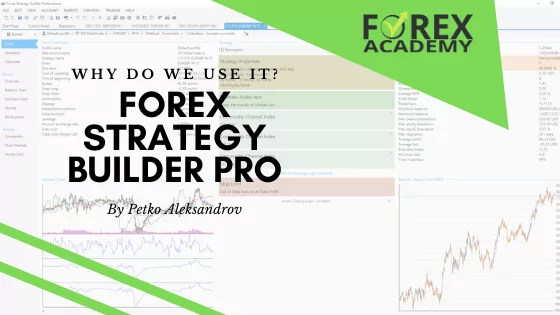So you’ve decided to start your journey as a trader. But at the beginning of this path, you’re faced with an important decision—choosing the right trading account. There are various options available when it comes to trading accounts. And you must carefully evaluate which account type offers the best balance of profitability, risk, and accessibility. Whether you prefer trading with your own capital, using a funded account, or leveraging hedge fund allocations, each option comes with unique advantages and challenges. So which is the best trading account for beginners? Let’s have a look.
In this article, we analyze three popular account types—Live Trading Accounts, Instant Funded Accounts, and Hedge Fund Accounts —specifically in the context of automated trading with expert advisors (EAs). To ensure a fair comparison, we base our evaluation on an EA that generates a 2% monthly return average, examining how different accounts perform over one year and projecting their profitability in the long run.
Our research goes beyond marketing promises, providing a clear, data-driven look at what beginners can realistically expect. By the end, you’ll have a clear understanding of which account type aligns with your goals and offers the best opportunity for growth. Whether you’re starting with $400 or a larger budget, this article will help you choose the best trading account for beginners in 2025.
Best Trading Account for Beginners: Live Trading Account
A live trading account is the most straightforward way to enter the markets. With this approach, you open an account with a regulated broker, of course, and deposit funds. So, let’s say you invest $400 in a live account, find an EA that makes an average of 2% per month and start trading. You don’t have a target and drawdown, so obviously the profit split is 100%, which means you can withdraw all the profits.
After deducting a 5% commission on trades, which is standard with many brokers, you end up with $91 in profit over one year. This is the result of a consistent 2% return per month. And since you own the account, there are no restrictions on trading strategies, you have full control over withdrawals. This makes a live account a safe and flexible option for beginners who want to trade at their own pace.
However, the biggest drawback is the limited growth potential. Even with a profitable EA, a small account balance significantly restricts your earnings. While making nearly $100 on a $400 investment in a year is a positive return, it’s not enough to scale your trading into a substantial income stream. Unlike funded accounts or hedge fund allocations, a live account doesn’t provide access to larger capital, meaning you are solely dependent on your own investment for growth.
Another challenge is that many beginner traders struggle with emotional decision-making when trading their own funds. While an EA removes some of the psychological pressure, account drawdowns or slow profit accumulation might lead traders to interfere with the strategy, often to their disadvantage.
Best Trading Account for Beginners: Instant Funded Account
For traders looking to start with a small personal investment but trade a larger account, an instant funded account can be an attractive option. Unlike a live trading account, where profits are limited by your capital, funded accounts provide access to more trading capital in exchange for a profit split and certain risk management rules.
In our comparison, we analyzed iFunds, a platform that offers a $5,000 funded trading account for an initial $400 fee. Using an expert advisor (EA) that generates 2% monthly returns, the total annual profit on this account would be $1,200. However, because iFunds takes a 50% profit split, as a trader, you keeps $600 for the year. After subtracting the initial investment of $400 to purchase the account, the net profit is $200—more than double the profit of a live account with the same starting capital.
But there’s an opportunity to earn even more. iFunds allows traders to increase their profit share by reducing their maximum drawdown limit. If a trader lowers the allowed drawdown to 6%, the profit split increases to 80%. In this scenario, the trader would retain $960 in profit, with a net revenue of $560 after deducting the initial fee—six times more than a live account.
The catch? Maintaining a low drawdown is challenging, especially over a full year. Most expert advisors experience periods of volatility, and exceeding the set drawdown limit could result in losing the funded account altogether. Additionally, traders using funded accounts must follow strict platform-specific rules, which may limit certain trading strategies.
Overall, instant funded accounts offer a strong profit potential, but they come with restrictions. Beginners must carefully consider risk management and drawdown limits before choosing this route.
Best Trading Account for Beginners: Hedge Fund Account
For traders seeking substantial capital allocation with minimal upfront investment, a hedge fund-backed trading account like Darwinex presents a compelling opportunity. Unlike live and funded accounts, Darwinex operates as a crowdsourced hedge fund, where traders receive capital allocations based on their trading performance.
In our comparison, we examined a Darwinex account with a $400 participation fee, which grants access to a €90,000 allocation over time. If you use an expert advisor (EA) with a 2% monthly return, you will gain $15,971 one-year profit. However, traders keep only 15% of this profit, which amounts to $2,396. After deducting the $400 participation fee, the net profit stands at $1,996—far exceeding the returns of both live and instant funded accounts with the same initial investment.
The capital allocation process starts with a €30,000 allocation in the second month, increases to €60,000 in the third month, and reaches the full €90,000 by the fourth month. This model allows traders to scale their earnings significantly without risking additional personal funds.
Advantages of Hedge Fund Account
- Large capital allocation with a low initial cost.
- No strict trading rules like those which funded accounts impose.
- Scalability – profitable traders can receive even larger allocations over time.
Challenges to Consider
- Commissions and fees apply, reducing overall profits.
- Only 15% of profits are retained – the majority goes to investors.
- Consistent performance is required – traders must maintain steady returns to keep allocations.
Despite these challenges, Hedge Funds like Darwinex offer the highest earning potential among all account types reviewed. If oyu are confident in your expert advisor’s performance, this model provides a low-risk path to trading with substantial capital.
Ready to trade smarter in 2025? Compare top account types for beginners—then explore our Top 10 Robots App and Prop Firm Robots App to start strong.
Best Trading Account for Beginners: Mid-size Accounts
While one-year profitability is important, serious traders should also consider long-term growth potential when choosing a trading account. To better understand which account type offers the highest returns over time, we extended our analysis to a three-year period, comparing different investment levels.
Scenario 1: $1,500 Investment
With a $1,500 starting balance, we compared a live trading account, an instant funded account (iFunds), and a hedge fund account (Darwinex).
- A live trading account with an EA generating 2% per month yields $342 in annual profit. While stable, this growth is limited by the initial capital, making it the least scalable option.
- With Instant Funded Account, for example with iFunds, traders can access a $25,000 funded account, which significantly boosts earnings. Under the standard 10% drawdown and 50% profit split, you would keep $400 after one year. However, if you have a strategy or expert advisor that can stay below a 6% drawdown, and you get an 80% profit split on a $25K account—it costs $1,600 to get $25K accounts—you would be making $3,200 at the end of the day. The hard thing here again is having an expert advisor that will stay below 6%. For the moment, the Vigorous EA is below 6%, however, only the future will show if it will stay like this till end of the year.
- A Darwinex hedge fund account allows traders to access $100,000 in capital with a Super Trader status, leading to an estimated one-year net profit of $5,322—far surpassing both live and funded accounts.
Scenario 2: $3,000 Investment
For those with a $3,000 initial budget, the differences become even more apparent:
- A live trading account generates only $684 in profit over a year, making it the least profitable choice for long-term growth.
- An iFunds account with a $50,000 allocation (with a 6% drawdown and 80% profit split) can yield $6,600 in annual profits. However, keeping the drawdown below 6% is easier said than done, which makes this option a bit risky.
- Darwinex, on the other hand, offers the most substantial returns. Traders can choose between permanent and non-permanent capital allocation, which significantly impacts their earnings:
- Without permanent allocation, the ROI (Return of Investment) over three years is 5.46x the initial investment.
- With permanent allocation, ROI increases to 6.88x, meaning for every $1 of participation fee, you would earn $6.88 in revenue.
- While the first-year cost is higher when opting for permanent allocation, it becomes the superior choice for long-term profitability.
Key Takeaways
- Live accounts are stable but lack scalability.
- Instant funding accounts like iFunds for example can generate higher returns but require strict risk management to maximize profit splits.
- Hedge fubds like Darwinex outperforms all options by providing access to large capital allocations with consistent performance.
For traders looking to maximize profits over time, Darwinex proves to be the most rewarding long-term choice.
Conclusion: The Best Trading Account for Beginners in 2025
Choosing the best trading account for beginners depends on your trading goals, risk tolerance, and ability to manage capital effectively. Our analysis compared live trading accounts, instant funded accounts, and hedge fund accounts, revealing key differences in profitability and growth potential.
- Live trading accounts provide full control over funds but offer the lowest returns due to limited capital. A $400 investment yields only $91 in profit per year with an expert advisor , making it a slow path for growth.
- Instant funded accounts give traders access to larger capital pools but come with profit splits and strict risk limits. With iFunds, a trader can earn up to $3,200 per year if they maintain a low 6% drawdown, though this can be challenging.
- Darwinex emerges as the most profitable option, offering a $90,000 allocation with a $400 participation fee. Over three years, traders can achieve a net profit of $115,270, making it the best long-term choice for serious traders using expert advisors.
To help you make the best decision, we’ve created a free trading profitability table—download it to compare your options. If you’re interested in automated trading, check out our Top 10 Bitcoin Robots for the best expert advisors in 2025.


